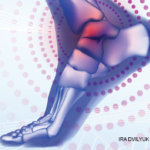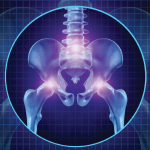During the swing phase, the swing foot must clear the ground and land in a position where it will not trip the next swing foot. If the swing foot moves too far forward, creating a wide stance, it can hinder the proper transfer of momentum, says Dr. Oatis. Challenges faced during the swing phase include strength problems, coordination issues, trouble placing the foot in good position, and joint mobility issues.
The Pain Factor
When pain comes into play, it can affect walking speed, which in turn forces people to expend more energy. “The caloric cost of gait is minimized when we walk at our free speed,” says Dr. Oatis. “If we walk faster or slower, then we expend more energy.”
During the swing phase, there is little activity in any of the leg muscles. Most of the movement relies on energy transfer from the muscles in the hip to the knee and from the ankle muscles to the knee. Muscle movements in the hip and ankle are responsible for propelling the knee, which is slightly flexed, through the swing phase of each step. As a result, even patients with healthy knees may experience walking problems if they have hip or ankle problems. In walking, the knee is relatively passive.
Despite the knee’s relatively passive role in gait, stiffness in this joint can still impair walking speed during the swing phase. “Even if all the muscles are working,” says Dr. Oatis, “if the knee joint is stiff, this energy transfer becomes compromised because the knee isn’t freely [moving].”
When physicians or other health professionals examine a patient’s gait, they should not simply focus on the problem joint. Hip and ankle problems also play a prominent role in gait disturbance. When watching a patient walk, the health professional may notice too little or too much pronation of the foot, which normally turns inward during gait. For patients with too much pronation, there are orthopedic shoes that can control excessive motion. Underpronation, which is also known as supination, can be helped with special shoes or by adding extra cushioning to existing shoes.
Patients in pain tend to alter their gait in the stance phase to lessen the load on weight-bearing joints. In some cases, patients may change their line of gravity by leaning to one side during their stride. In other circumstances, they may adjust the timing of their gait or walk more slowly to lessen the burden on a painful joint. While slow walking speed and exaggerated leans may be easy to spot, it can be difficult to spot more subtle problems that can hinder a patient’s walking ability, says Gross.
Tools for Gait Analysis
One high-tech solution for gait analysis is an instrumented walkway. The patient is asked to walk across a special mat that is equipped with sensors to detect the length and timing of steps, toe and heel position at various points of gait, and time spent in single or double support. Analyzing these data can be easier than trying to watch for all the various factors that come into play for gait, says Gross.

